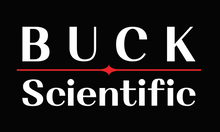Description
Features
- FID & TCD Detectors
- On-Column Injector
- Built-in air compressor
- 1-meter Silica Gel Column
- Temperature Programmable Column Oven
- Electronic Pressure Control (EPC) for Carrier & Combustion Gases
- 4 channel PeakSimple Data System
- Programmed oven temperatures from 50°C/min up to 300°C and 20°C/min from 300°C to 450°C
- Peak Simple Software for Windows with built-in 4 channel serial data system
- Fast cool oven from 400°C to 50°C in less than 5 minutes for increased sample throughput
Electronic pressure controls (EPC) maintains flat baselines over full temperature range, with highly stable retention times
Performs research quality analyses under rigorous lab or field conditions
Over 12 different detector options to choose from for optimal measurement results
910 GC with FID & TCD detectors 30 Meter column, and built-in air compressor.
In the lab, the 910-series GCs perform routine industrial analyses and complicated research separations easily, generating accurate and reproducible results. Designed to be durable and portable, the compact 310-series is ideal for operation in the field, E.P.A. and A.S.T.M. methods can be easily performed on-site, even in adverse field environments. Use the 910 & 310 and obtain quality results.
A GC with the versatility to meet your labs specific needs. The unique architecture of the Buck GC systems allow various detector and injector combinations, so each GC can be configured to meet your specific lab requirements. The full-size 910-GC can accommodate multiple injectors and detectors for multi-functional applications, while the smaller 310-GC is equally flexible for portable and field analysis. Automated Analyses. Let the GC do the work so you don't have to -The Buck 910/310 offer total control of application parameters using PeakSimple software. PeakSimple allows unlimited temperature programming, electronic pressure control, carrier gas pressure, gas valve position, gas solenoid actuation, autosampler control and other options. Just program your application parameters into the computer and let the 910 do the rest.
FID (Flame Ionization Detector)- Commonly used for Organic analyses, it is specific for Hydrocarbon species with a working range from ~10PPM to 10% for C1-C10 compounds. It has a high temperature range, over 400°C, and can be interfaced with add-on detectors for selective-species measurements. Solvent and material characterization, environmental samples, TPH and petroleum analyses are primary applications. Air & Hydrogen are support gases, using Helium for a carrier gas.
TCD Detector
- Universal detector
- Detects from 100% down to 200-500 ppm
- Easily replaceable filaments
- Thermostatted up to 275° C
Because it detects all molecules, the Thermal Conductivity Detector is commonly used for fixed gas analysis (O2, N2, CO, CO2, H2S, NO, etc.) where the target analytes do not respond well on other, more sensitive detectors. The TCD can detect concentrations from 100% down to around 100 ppm on a flat baseline with sharp peaks. Where the peak is broad or the baseline is not flat, detection limits of 300 ppm are more realistic. For lower detection limits, the HID detector may be more suitable for inorganics, and the FID detector provides 1ppm detection for hydrocarbon species.
The TCD consists of four tungsten-rhenium filaments in a Wheatstone bridge configuration. Electric current flows through the filaments, causing them to heat up. Carrier gas (usually helium, which has very high thermal conductivity) flows across the filaments, removing heat at a constant rate. Two of the filaments are exposed only to carrier gas (reference), and two are exposed to the carrier/sample flow. When a sample molecule with lower thermal conductivity than the carrier gas exits the column and flows across the two sample filaments, the temperature of the filaments increases. This temperature increase unbalances the Wheatstone bridge and generates a peak as sample molecules transit through the detector.
A filament protection circuit prevents filament damage by disabling the current if carrier pressure is not detected by the GC, but cannot prevent filament damage in all circumstances. The TCD is equipped with user-replaceable filaments in the event of a burn-out.
Gas Chromatography Application Notes
- Analysis of Gasoline Range Organics GRO in Soil and Groundwater Using FieldPortable Purge and Trap GC FID PID.pdf
- Analysis of Natural Gas Products by GC with TCD and FID detectors.pdf
-
Differentiating Polychlorinated Biphenyls PCBs by GC with FID and ECD detectors.pdf
-
Environmental Analysis of BTEX Compounds in Soil, Water and Sludge by GC with PID detector.pdf
- Environmental Analysis of Volatile Compoundsin Soil, Water and Sludge by GC with PID and DELCD detectors.pdf
- Measurement of Methyl Isothiocyanate and Other Insecticides by GC with FID and FPD detectors.pdf
-
Measurement of Residual Arochlors and otherPesticides in Meat Products by GC with ECD and NPD detectors.pdf
- Pesticide Analysis by GC with ECD-NPD and FID detectors.pdf
-
Rapid Measurement of Alcohol Ethanol inBeer and Wine Making by GC with FID.pdf
- Ultra-Sensitive Coal Tar Distillate Analysisy GC with PID detector.pdf


